This melt in your mouth cake is a wonderful offering as a dessert or for afternoon tea.
Another favorite lemon cake recipe is lemon thyme tea cakes.
For ease of browsing, here are all of my cake recipes. Thanks for stopping by!
I got up yesterday feeling all happy, Spring-ish and Bake-y. So, taking a “Q” from Q_thechef (who keeps on top of these things), I checked the food holidays for March 30 to see if I could bake something in Honor of the Day. Alas, I found that March 29 was Lemon Chiffon Cake Day. I had missed a baking day and shot right over to Turkey Neck Soup Day. Don’t get me wrong, I enjoy turkey soup, and I have used necks to make my stock before, but it wasn’t exactly what I had in mind.
My friend, BA from Asian in America suggested that I ignore Turkey Neck Soup Day (sorry, TNSD) and make a lemon chiffon cake anyway. I thought it a Banner Idea, but rather than just make a standard chiffon cake, I thought I’d pull out my lemon olive oil cake. Now, when I say “my” I don’t mean that I came up with it all by myself. The original recipe is available to All and Sundry on Epicurious.
I used to make this as wee individual loaf cakes at the restaurant. I added lemon verbena to the batter, soaked the cakes with a lemon verbena-mint syrup and served them with milk sorbet. It was a Rather Nice and Spring-ish dessert. So I thought I’d revisit the recipe for old times’ sake. And because it is very lemony and delightful.
Pastry Chef Online Participates in Affiliate Programs. If you make a purchase through one of my links, I may earn a small commission. For more information click to read my disclosure policy
Since this cake is leavened solely by steam (whipped yolks and whites), you must be very, very thorough during the Whipping Stages. Also, I’d suggest that you bake these in individual forms. They rise up shockingly high, and then like a soufflé (which these guys kind of are), they schlump back down. The final cake tends to have buckled sides and looks kind of like a slouchy granny hat. Which has a certain Charm, I must admit.
Next time, I might try experimenting with rigging the pan so I can cool it upside down like an angel food cake to see if it will retain its volume. Regardless, know that as long as it is fully baked, if it falls a bit, that’s just How It Is.
What you’ll end up with is a cake with a paradoxically light and heavy texture. Because it collapses as it cools, the crumb is so fine that the cake melts in your mouth. Even when completely cool (although I like to serve it warm). It’s good stuff, and I highly recommend you make it. Use a good quality extra virgin olive oil as the flavor really shines through. If you have some special flavored olive oil (not Meat Flavored or anything) try using that.
And do make sure you whip the Ever Loving Mess out of both your yolks and your whites. The yolks should be whipped to creamy, pale thickness. Scrape the bowl–all the way down to the bottom–several times during whipping. The whole process should take at least 5-7 minutes. Longer is just fine. Whip the whites to glossy medium-stiff peaks. Timing is important here, because once the whites have achieve Maximum Volume, they tend to start setting up/drying out if they sit for more than a minute or two. So gently whisk them every once in awhile to keep that from happening. If you must choose between whipping the yolks or the whites first, do the yolks. They can sit for several minutes without ill effect because the lecithin in the yolks helps keep the emulsion from breaking down.
First, the process pictures. I don’t really like to do process pictures because the photography gets in the way of my Baking Flow, but I thought it important for you to see what you’re looking for texture-wise.
First, you’ll want to do all your mise en place. Zest your lemons, squeeze them, weigh your flour, measure your oil, mince your herbs, separate your eggs. Stuff that you won’t want to stop to do while you’re In Flagrante Cake-us Delicto.
Next up, whip the yolks, salt, herbs, zest and half the sugar. I mean, Really whip them. From this:
To this:
While you’re beating the Mess out of your yolk mixture, whip up your whites. If you have a second mixer or a hand mixer, use it. If you’re feeling cocky, whip them–along with the rest of the sugar–by hand. It’s a bit daunting, but you will feel like a such a Badass when you’re done. I mean, I’m seriously considering getting a whisk tattoo now.
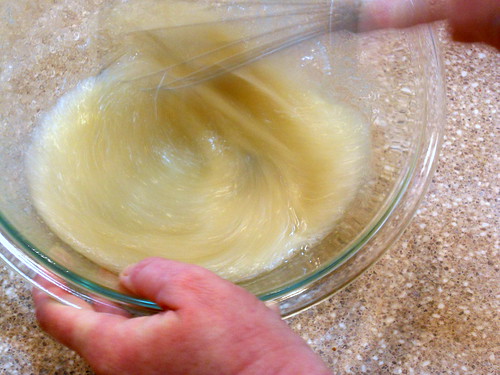
In the middle of all the Mad Whisking, you have to find time to drizzle the olive oil and lemon juice into the yolk mixture. Do this slowly–pretend you’re making mayonnaise. Which is kind of what you’re doing. Except you’re going to turn it into cake.
Once you’ve got your three components ready–the yolk mixture, the flour and the whites–it’s time to combine them. You want to do this in the Gentlest Way Possible so that you don’t deflate your batter that you worked so hard to inflate. Not to mention, you now have a tattoo that you must live up to.
The best way I’ve found to bring the three together is to scoop the whites into the bowl with the yolks and then sift the flour on top. Thusly:
Once they’re all in the same bowl, fold everyone together. A whisk is a great tool to use, at least to start, since the wires won’t disturb many of your bubbles. I finish up the last couple of turns with a spatula, just to make sure I incorporate anything that might be stuck on the sides of the bowl .
Now, it’s just a matter of scooping the batter into your prepared pan (a parchment circle is sufficient–you don’t really need pan spray), sprinkling some sugar on the top and baking until done. I start mine at 375 for the first 25 minutes and then turn the heat down to 325 for another 15 or so, or until a tester inserted in the center of the cake comes out clean.
This is a 3″ pan, and in the oven, the cake rose right to the top. While it cooled, it sank to about 1/4″ higher than you see the batter here. The resulting cake, as I said is light and dense at the same time. Next time, I really will experiment with cooling it upside down to see if I can maintain the volume.
Don't let its small price and small size fool you. The Escali Primo is an accurate and easy-to-use food scale that I have used for years. It's easy to store, easy to use, has a tare function, and easily switches between grams and ounces/pounds for accurate measurements.
It will help me and other readers so much if you take a moment to rate and leave a review for this recipe.
You can use the stars to rate 1-5 (5 is best), and leave a review in the comments. It helps me make adjustments if any are needed, and comments help others decide whether the recipe is worth making.
Other ways to share include pinning, and/or sharing on your favorite social media platform.
Thank you so much for taking the time!

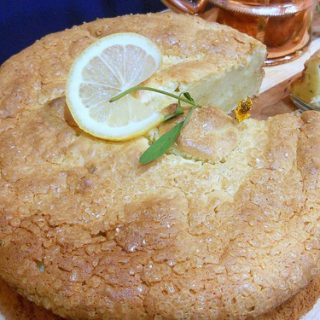
Lemon Olive Oil Cake with Tarragon
Ingredients
- ¾ cup sugar divided roughly in half
- 5 egg yolks
- very heavy pinch of salt about 1/4 teaspoon
- zest of 2 lemons
- 1-2 Tablespoons minced Herb of Choice
- 4 egg whites
- ¾ cup fruity extra virgin olive oil
- ¼ cup freshly squeezed lemon juice
- 4 oz cake flour
- 1-2 Tablespoons demerara (or other sugar with large crystals)
Instructions
- Preheat your oven to 375F.
- If baking in a large pan, put a cake circle in the bottom of it and set it aside. If baking individual cakes (like in muffin tins), either use cupcake liners or give each cavity a quick spray with pan spray. I haven’t checked, but this recipe will probably make 12-16 cupcakes.
- In the bowl of your stand mixer fitted with the whip attachment, combine half the sugar, yolks, salt, lemon zest and herbs. Whip on high, scraping the bowl often, until very pale and thick.
- Put the olive oil and lemon juice into a liquid measure. You should have a total of 1 cup. Drizzle it very slowly into the yolk mixture, stopping two or three times to scrape down the bowl.
- Meanwhile, with a hand mixer or whisk, beat the whites and the rest of the sugar to glossy medium-stiff peaks.
- Scoop the whites into the yolks and sift the flour over all.
- Fold together gently but thoroughly, until no streaks remain.
- Scoop into your prepared pan(s) and smooth the top(s).
- Liberally sprinkle with demerara sugar.
- Bake for 25 minutes without opening the oven door. Reduce the heat to 325F and continue to bake until a tester inserted in the center of the cake comes out clean, about another 15 minutes.
- For individual cakes, bake at 375F for 12 minutes then reduce the heat to 325F. Start checking for doneness after about 15 total minutes of baking.
- Let cool in the pan for a few minutes and then turn out on a rack to cool upright. If you can rig a way to cool the cakes upside down, do it.
Did You Make Any Changes?

Hi, y’all! I hope you’ve enjoyed this post and hopefully also learned a thing or two.
If you like my style, I invite you to sign up for my occasional newsletter, The Inbox Pastry Chef.
Expect updates on new and tasty recipes as well as a bit of behind-the-scenes action. I hope to see you there!
This might be more than you ever wanted to know about making a cake raised solely with egg foam, but for me, you can never have too much information. About cake, that is. Knowledge is power.
Take care, and I hope you have a lovely day.



Join in Today!
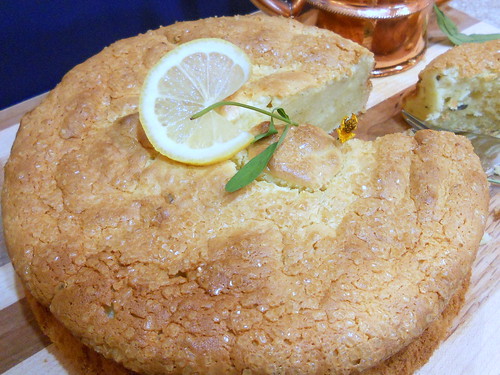
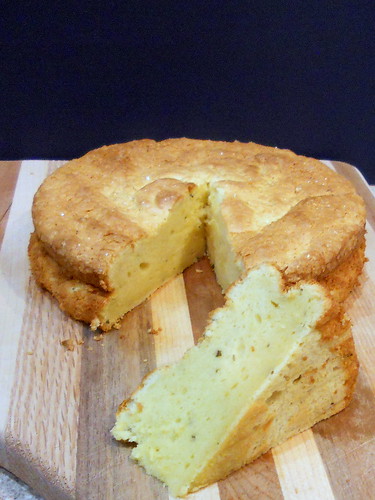
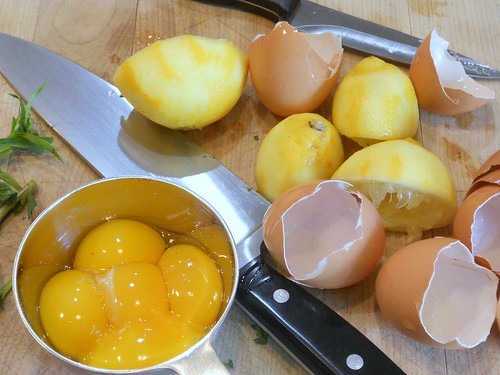


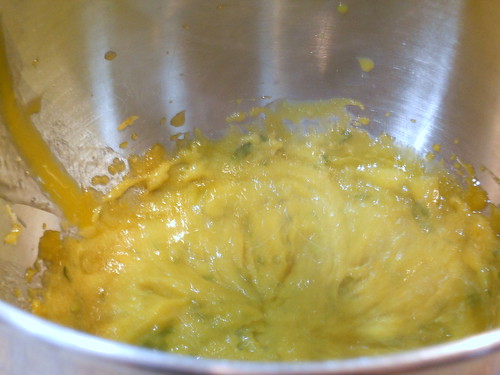

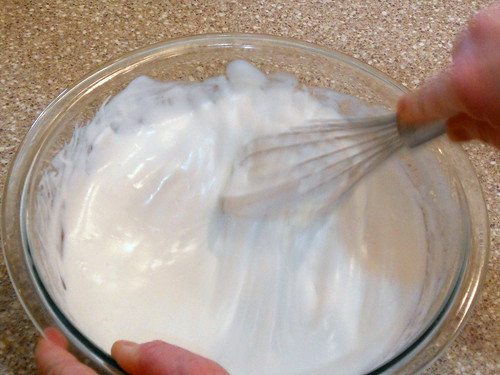

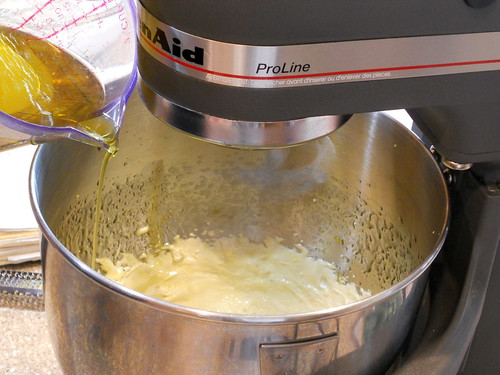
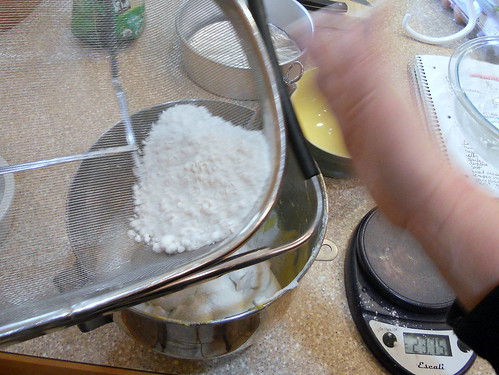
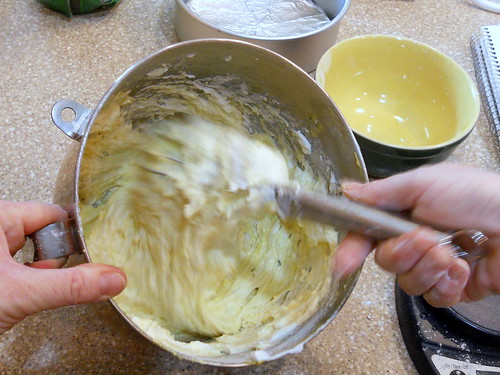


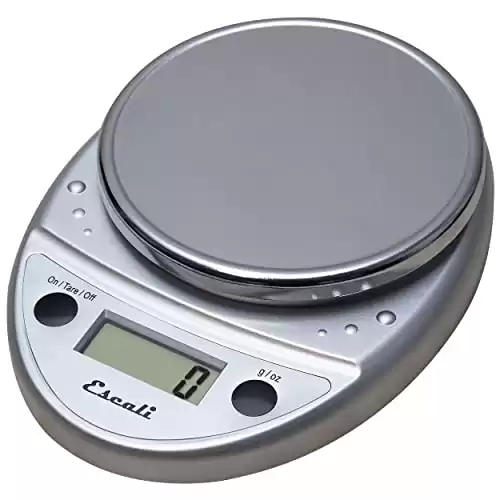
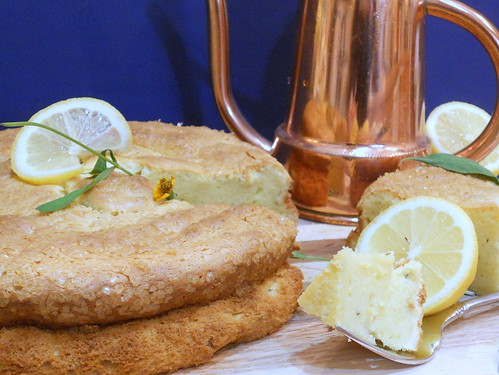
Found you here by searching lemon tarragon cupcake. Love and inspired by your methods. Have you actually tried this with cupcakes? Using paper wrappers I want to be certain I get a clean peel away from the wrapper. My customers would probably expect this from my work. Thanks for any help. Beautiful cake. ~Kimmy
Hi Kimmy, and thanks! I have baked these as individuals in tiny mini loaf pans, but only pan spraying the indentations. I would certainly encourage you to make a test batch of cupcakes in papers. Since the batter would likely “climb” up the paper it might not have as much of a tendency to fall and compact on cooling. As to peeling cleanly away–I couldn’t be certain, but I’d be willing to bet that with as egg-heavy as the recipe is that it won’t be overly cooperative, peeling-wise. I do think if you bake them in muffin tins without liners, let them cool upside down in the pans, and then turn them out, you could probably then put them in those decorative cupcake wrappers for sale/serving. If you give it a shot, please let me know how it goes!
Jenni, I have a technical question for you about olive oil cake. I’ve made them 3 times, but never using the whipped egg technique you use here. Twice I used this Bill Yosses recipe I got from Saveur, here:
http://www.saveur.com/article/Recipes/Orange-Scented-Olive-Oil-Cake
I gave it two tries, finally posting a negative review because it was just gummy and awful. (Mine’s the next to last comment.)
Do you think it’s necessary to use the egg-leavened technique you employ to get a successful EVOO cake?
I think it’s more likely that the pulp from the oranges is weighing the cake down, Maggie. I’d try it with just freshly squeezed orange juice and zest as opposed to using the entire orange. And in a sugar syrup too? That’s a lot of weight to expect a bit of baking soda and baking powder to deal with!
I will say that even though my olive oil cakes rise really high when I make them with the genoise technique, they do tend to sink upon cooling. I keep threatening to try cooling them upside down like I would an angel food cake. If I do, I will report back.
Thanks much for the input, Jenni. I’m going to try the technique you use here, using orange and rosemary flavors (just cuz I love them together). It’s way more work, but I’m game for it and I really, really want a great EVOO cake. And so far I’ve had massive success with your recipes. This week I made your caramel spice pound cake (another swirly pan WIN), and loved the dense, tight crumb it had. You’ve quickly turned into my favorite baking blog.
Makes me so happy to hear you say that, Maggie! That cake is really good–I love the idea of caramelizing the sugar to add to it. I’ve done it with chocolate cake too and it was fantastic as well! Please let me know how your orange and tangerine extravaganza goes–I expect it will be magnificent! =)
Oh this looks so good. I make an olive oil rosemary cake doused in lemonade, but the texture on this looks different and sooo good.
the texture is really lovely on this cake–it comes from crazily whisking (w/the mixer, hopefully) for longer than you think you need to! If you give it a try, please let me know how you like it!
jenni
thanks for dropping by my blog, lily’s wai sek hong, you have a lovely blog
Thank you very much! I appreciate your visit and your talent:)
Thank you so much, Lily! Loved your Angry Birds cake:)
Anyone could follow those directions and end up with a perfect cake. I love your cooking and this cake is so different but delicious looking!
I hope so, Maureen–that was my intention! It’s a good one, and it seems to get better w/time (w/in reason;) Just had a slice 2 days after baking–moist and melty. 🙂
Would you believe I have really never fully experienced tarragon? I know, crazy right? 🙂 Your directions look fantastic to me, I don’t know what that guy was talking about:-p It sounds so delicious! Sending hugs your way, Terra
Lemon thyme or lemon verbena would’ve been my first choices, but I thought the slight anise-ness of the tarragon would be nice w/the lemon. It works. To me, even though I don’t like licorice, per se, tarragon tastes bright like Spring:) Hugs back to you, friend!